This article is the second in a series about the fall of Artsakh, its humanitarian consequences and relief efforts, based on Lillian Avedian’s on-the-ground reporting from Armenia in October 2023.
Dr. Nyree Derderian has led the Armenian Relief Society (ARS) humanitarian efforts in response to six crises in Armenia and the diaspora, but she says the latest and last one of her term as the ARS chairperson hurts the most.
Over 100,000 Armenians have been displaced after Azerbaijan launched a full-scale military offensive on Artsakh on September 19. The attack, which caused widespread destruction to civilian homes and settlements and killed at least 200 Artsakh soldiers and civilians, forced the Artsakh Defense Army to disband and the Armenian leadership of Artsakh to dissolve all state institutions.
Almost the entire Armenian population of Artsakh has now been forcibly displaced to Armenia, where nonprofit organizations have mobilized rapidly to meet their immediate needs and organize their integration into Armenia’s society and economy. The Armenians of Artsakh are also emerging from a devastating, near 10-month blockade that created severe shortages of food, medicine, hygiene products and other basic necessities and has left many with health complications and nutrition deficiency. In Armenia, they are facing a severe humanitarian crisis, with pressing challenges including sustenance, housing, job placement and skills training.

“During the 10-month blockade, whenever we spoke to our ungerouhies in Artsakh, at the end of every phone call, they would say, pind gatsek. Stay strong. Even after this last attack on September 19-20, when we knew it was close to the end and there would be another capitulation, they were still saying, pind gatsek,” Derderian said. Yet now, after aiding Artsakh’s Armenians after three rounds of displacement over the years, she is observing an unprecedented level of pain and fear in the eyes of the displaced.
Derderian’s term as ARS chair expired in October 2023, when the international organization elected a new Central Executive Board led by Arousyak Melkonian. To date, the ARS has distributed one month’s supply of food to 1,000 families displaced from Artsakh. The food includes flour, lentils, rice, macaroni, wheat, barley, cooking oil, sugar, tea and salt. The ARS also provided the families with hygiene products, including toilet paper, dish soap, shampoo, bath soap, dishwashing detergent, laundry detergent, feminine products and diapers.
The ARS has now joined forces with the Armenian Revolutionary Federation (ARF), Hamazkayin and Homenetmen to coordinate efforts to aid the displaced. They are considering projects such as gift cards for grocery stores that are sustainable to implement in the long term.
Integrating displaced people into a new society is a complex process that requires long-term strategy and continuous funding. The displaced left behind most of their possessions and clothing in Artsakh. They are trying to build new homes without furniture or kitchen tools. Some families are sleeping on the floor in unfurnished houses. Many families do not have blankets or warm clothing for the impending cold months. Aid workers agree that these basic necessities need to be fulfilled as quickly as possible.
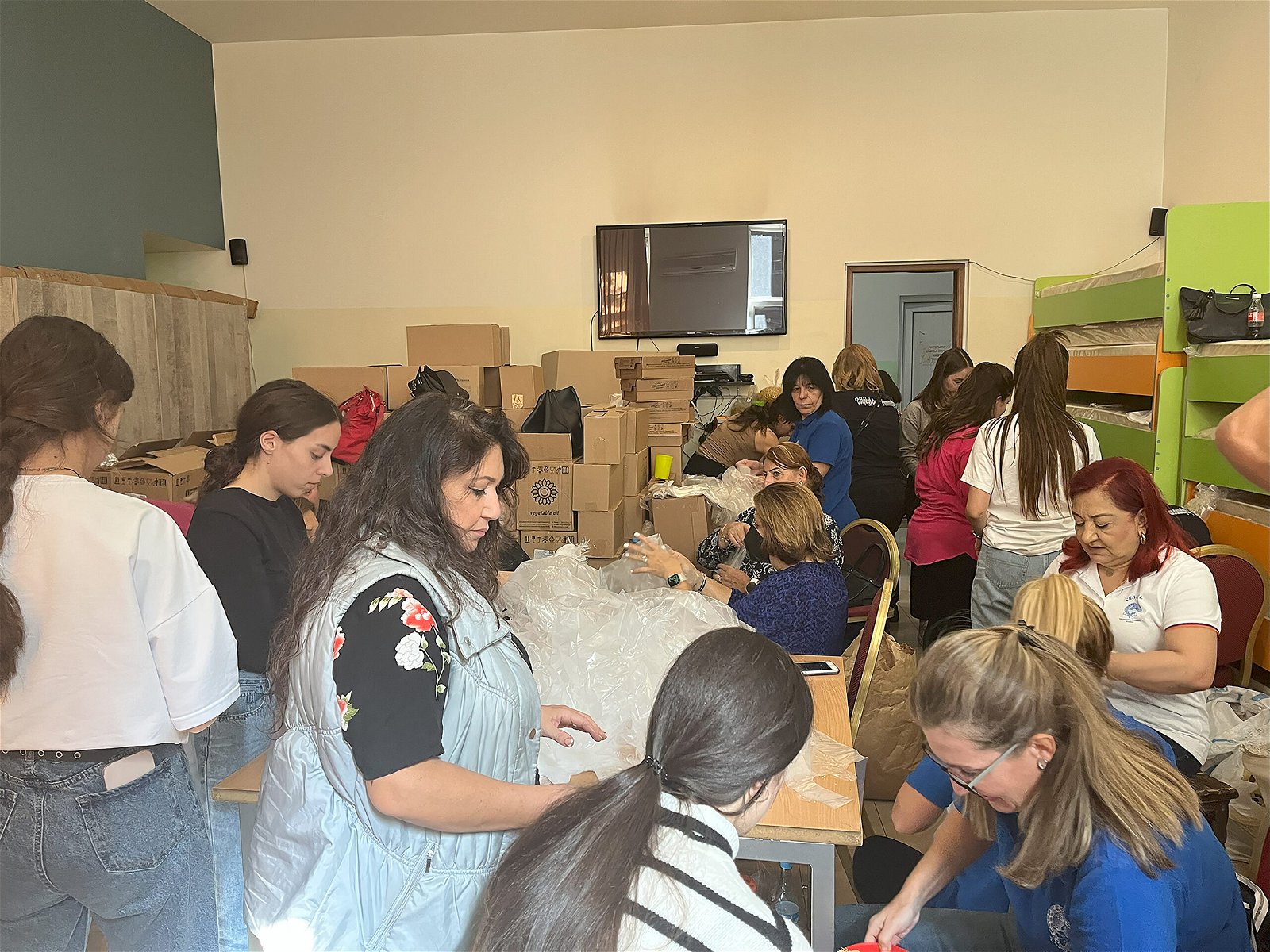
However, after the short-term mobilization to provide humanitarian aid passes, difficult challenges await. A primary concern is job placement and skills training for the displaced. During Azerbaijan’s blockade of Artsakh, 40-percent of businesses in Artsakh suspended their activities, and more than 90-percent of private sector workers lost their jobs, according to official data. Many people have not had the opportunity to work for 10 months.
Derderian says that people from Artsakh have come to Armenia eager to find work. The ARS is considering how to collect an inventory of available jobs or create new jobs in Armenia for the displaced from Artsakh. “We want to [help] make them constructive figures within society. We don’t want to turn them to begging and homelessness,” Derderian said.
The housing crisis is another issue with hidden complexities requiring visionary solutions. Thousands of displaced people from Artsakh remain in temporary housing. The Armenian government has said that it is providing housing for about 68,000 people in abandoned buildings, hotels and houses. Many people who the government assistance has not reached are still staying in temporary shelters hastily converted from empty schools, offices and other buildings, provided by nonprofit organizations.
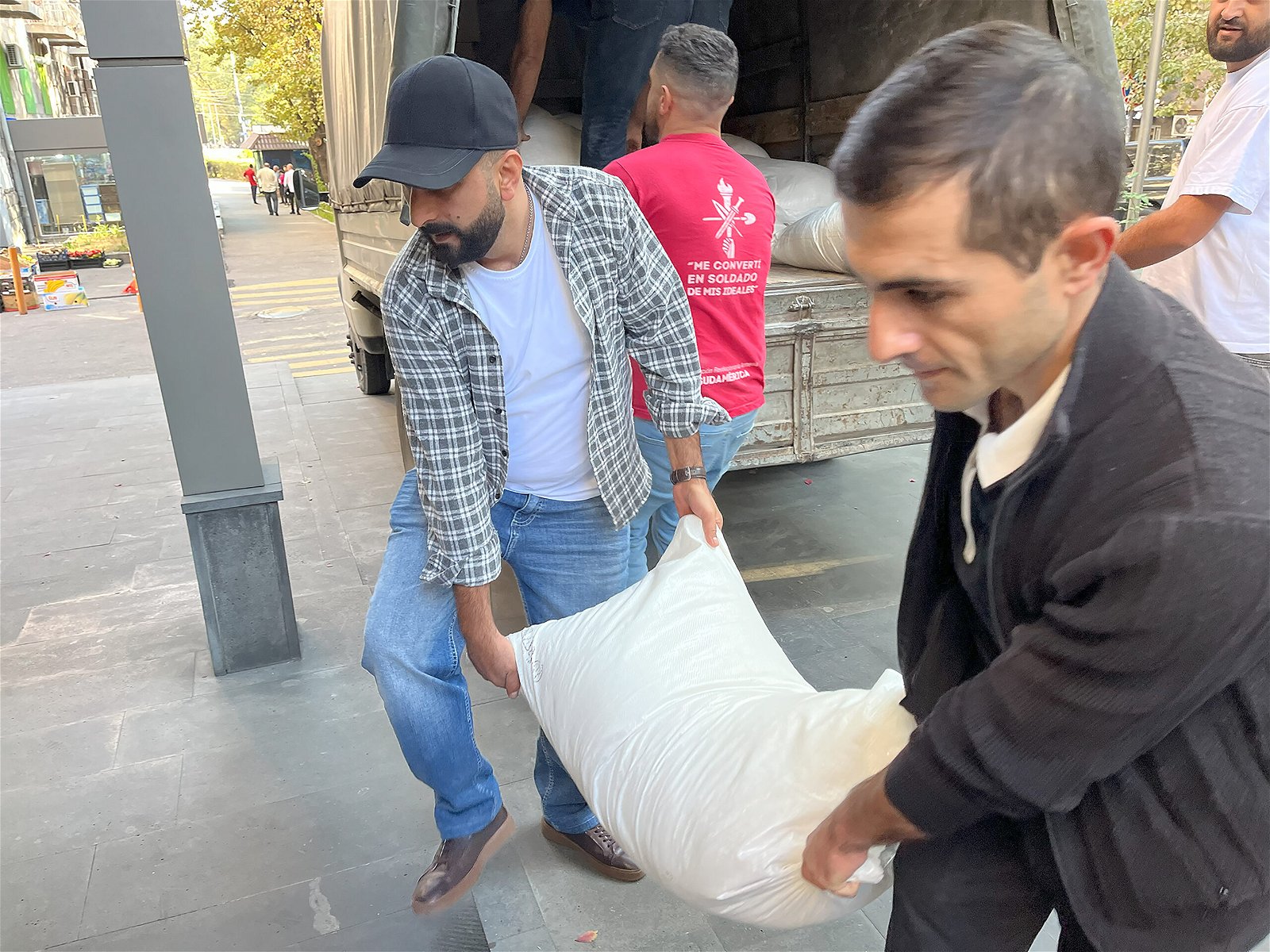
The ARS has been assisting families with finding housing and paying rent. For instance, it converted a building at a Dilijan campground into four housing units for four families, supplying them with new refrigerators, gas stoves and heaters. The ARS has also connected families with Armenians in the diaspora who have offered their empty summer houses to the displaced.
Families who have decided to rent houses or apartments have faced exorbitant prices. Landlords have been raising the rent of a house or apartment after learning that it will be inhabited by a family from Artsakh. A two-bedroom house that used to cost 100,000 drams ($250 USD) to rent now costs 300,000 ($745 USD) or 400,000 drams ($1,000 USD).
“They’re raising the rent to insure they get the highest amount they can possibly receive from Artsakhtsis, knowing they will be receiving aid from overseas as well as from the government,” Derderian said.
Yet Derderian cautions that it is not sufficient to place individual families in houses, without considering the preservation of their ties to their extended families and neighbors. Amid the chaos of the mass displacement from Artsakh, people from the same towns and villages were dispersed across Armenia. These are tight-knit communities that, during the blockade of Artsakh, relied on each other to share scarce supplies of food and resources for survival, as well as to offer support and comfort. These networks of mutual care, which people had depended on for their material and psychological well-being, have now been torn apart.
Derderian suggests placing displaced families and their neighbors from their hometowns and villages within close proximity to each other. Existing villages that can be expanded, or villages whose populations have been depleted due to migration, can be identified for housing people from Artsakh and recreating their communities from home.
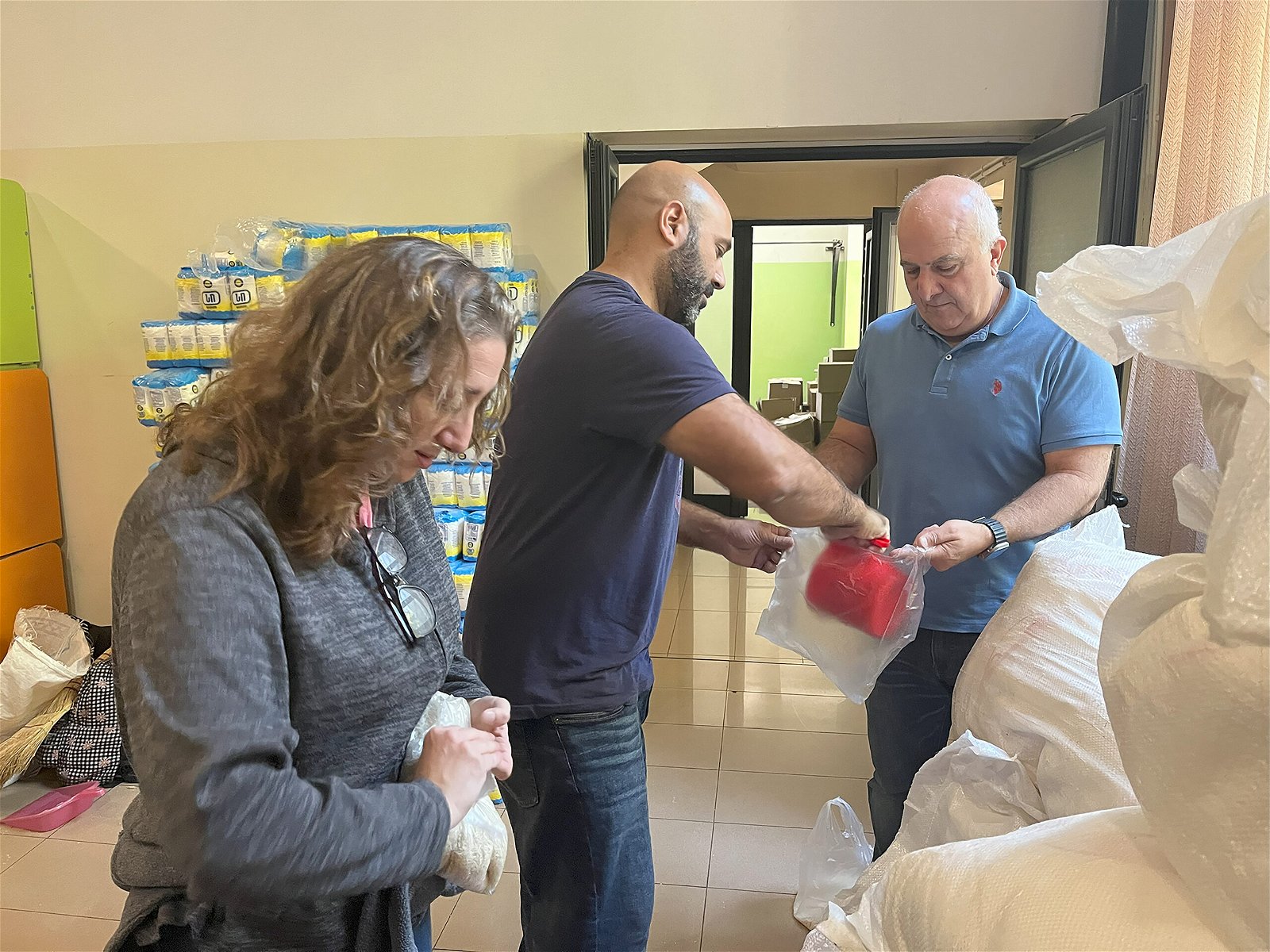
Lifestyle and profession must also be taken into account. People who worked in farming in Artsakh’s rural regions can be offered arable land to resume their agricultural activities, Derderian says. For people who lived in Artsakh’s capital city Stepakert accustomed to urban life and trained for urban jobs, she suggests creating a satellite city.
“We want to integrate them in the right way, even if that includes keeping them together as communities,” Derderian said.
The Armenian government has allocated 30 billion drams, about $75 million USD, to assist displaced people with securing housing. Displaced people can apply to receive 50,000 drams, about $125 USD, a month until March 2024 to pay rent and utility bills. Every displaced person has also been promised a one-off cash payment of 100,000 drams ($250). Many of the refugees I interviewed have not received the cash payment yet.
Derderian urged a long-term strategy to secure permanent housing beyond the next six months. “The reality is, if the government starts passing out its six month’s promised aid to Artsakh Armenians, what’s going to happen in that seventh month? We’re going to have another housing crisis. We’re going to have another food crisis. We’re going to have another medical crisis on our hands, or we’re going to have the fear of them leaving the country, which is something we don’t want,” Derderian said.
Gev Iskajyan, the executive director of the Armenian National Committee of Artsakh, says that effectively addressing issues like job placement and capacity building is a more difficult and serious task than providing immediate relief. “I’m not too worried about temporary housing, about getting them food, supplies and clothes, because that will reach everybody. My fear is, how do they integrate into the society, both psychologically going through what they’ve been through, and also, what do you do?” Iskajyan posed. “Where do you work? Where do you settle your family down? Where do you afford rent?”
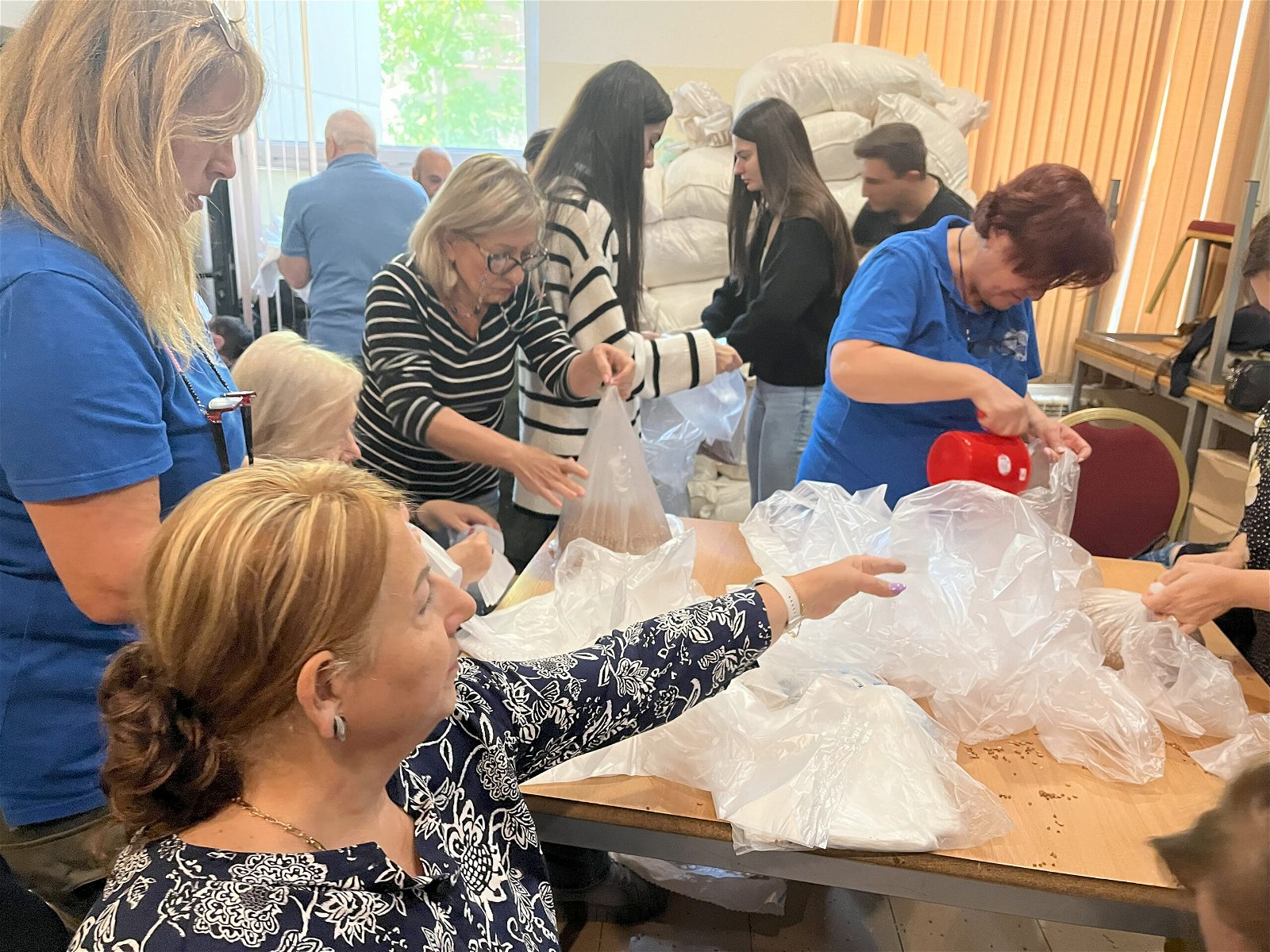
Aid workers have directed their call for long-term solutions and strategies not only to the Armenian government, but also to the diaspora. There is a lot of attention on Armenia from the Armenian diaspora right now, among people who are concerned about the humanitarian crisis and eager to help. Yet aid workers say that, in order to create a sustainable system for responding effectively to crises and resolve the structural challenges to securing people’s well-being, the diaspora’s engagement must last beyond the present emergency.
“You get a finite amount of attention during a crisis, even amongst Armenians, but when that dies down, the real difficult journey ahead still exists,” Iskajyan said. “One of my biggest fears is, when we’re in crisis, we’re a really good nation in terms of uniting around things. When we’re not, when there’s no acute threat in front of us, that dies down, but there’s still people that need to be served.”
The ARS has raised about one million dollars from Armenians around the world to address the humanitarian needs of the displaced. Derderian feels grateful and inspired by these donations, yet she urges people to donate to the ARS even when there is no emergency. “When there’s a crisis, everyone thinks about donating to the ARS, because we’re one of the organizations that makes a promise and keeps it,” she said. “During days of peace, when it’s quiet and everything is calm, we’re quite overlooked.”
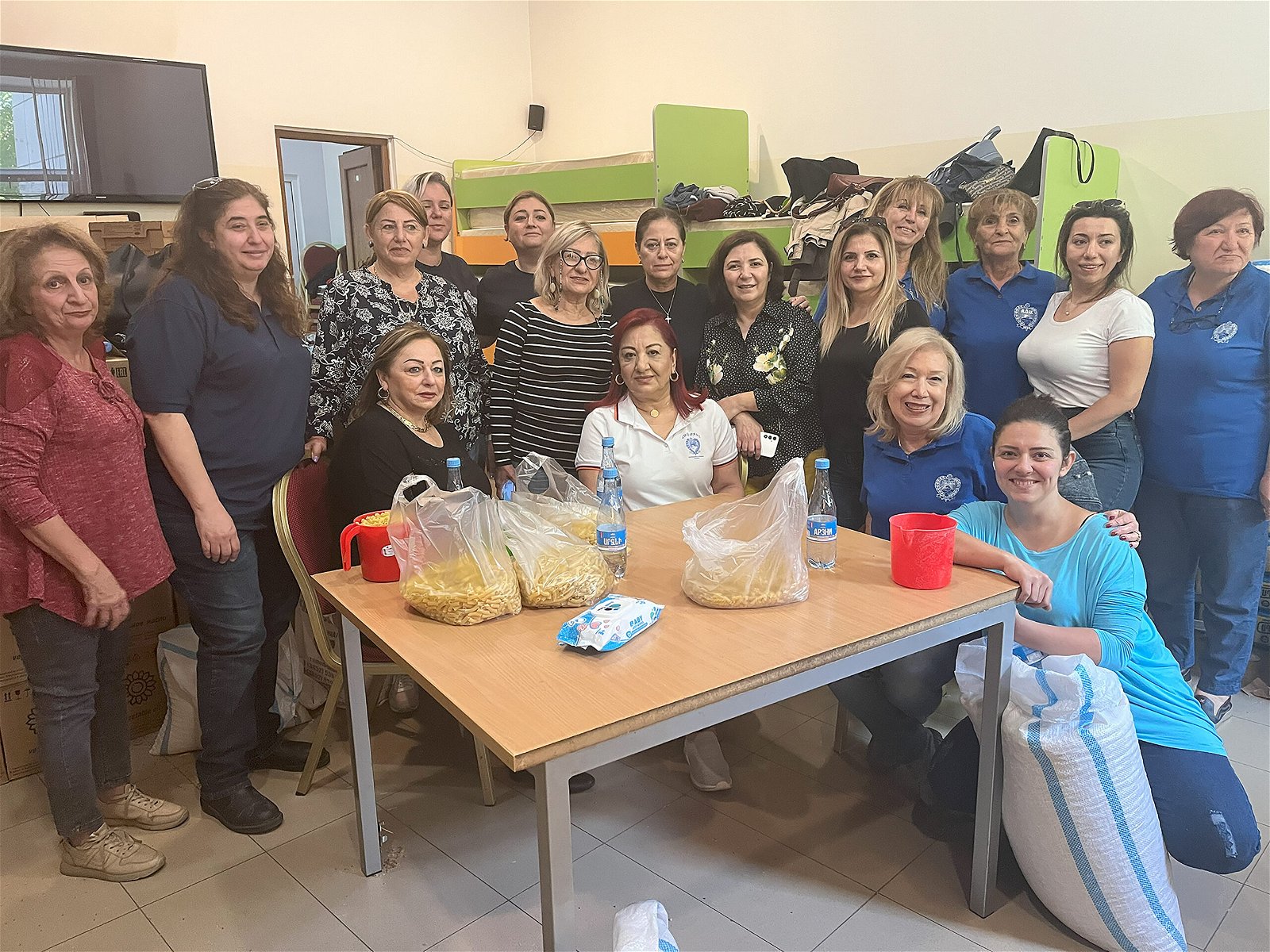
During Derderian’s term as chairperson of the ARS Central Executive Board from October 2019-October 2023, the board responded to six different calamities facing Armenia and its diaspora, including in Lebanon and Artsakh. While the ARS has learned how to efficiently mobilize when faced with an emergency, Derderian says that in terms of raising funds, “every crisis is a start from zero.” She believes that if the ARS had a reserve fund, made up of consistent donations in peacetime, it would be financially viable and better prepared to respond to disasters.
I visited the Aram Manoukian Youth Center in central Yerevan, where the ARS set up its operation to pack and distribute food to displaced Armenians from Artsakh. About two dozen women in blue shirts emblazoned with the ARS logo clustered around tables and in corners in a room the size of a small bedroom to package food, before loading the food and supplies onto trucks for distribution.
“When my homeland is unhappy, I’m also unhappy,” Hayastan Yeghiazarian, whose name means Armenia, told me while shoveling rice into plastic bags.
Yeghiazarian has been a member of the ARS chapter of Malatia-Sebastia, a district of Yerevan, since 1991. She attended the opening of the network of ARS “Sosseh” kindergartens in Stepanakert in 1998. All 12 kindergartens are now under Azerbaijani control and have ceased operations. “We can’t look at those pictures,” she said in a mournful tone. “Those happy days. These bitter times.”

Iskajyan was also volunteering for the ARS, carrying heavy bags of food. Iskajyan spent the duration of Azerbaijan’s blockade living in Stepanakert as the executive director of the ANC in Artsakh. Although he is a United States citizen, leaving Artsakh never crossed his mind. While he is grappling with the trauma of living under blockade and witnessing war, he has devoted himself to aiding the displaced Armenian population from Artsakh.
Iskajyan said he moved to Artsakh after watching the 44-day war in Artsakh in the fall of 2020 from abroad. “If there’s an existential threat, I want to be in the heart of it,” he said. “I know I would feel worse if I was watching it from the outside, as opposed to being on the ground. It actually made my soul feel much more calm, regardless of what the difficulties were.”
In the days following the fall of Artsakh on September 19, Armenians from across the diaspora made the rapid decision to travel to Armenia and join volunteer efforts. Among them is 31-year-old Garineh Torossian, who within two days booked her flight along with her friend from Sydney, Australia to Yerevan, Armenia and contacted family members to gather donations. She ultimately collected over 200 pounds of warm winter clothing and underclothing to donate to the ARS. I met her while she was volunteering at the Aram Manoukian Center just one day after her flight landed.
“It was a very easy decision. It was really a no-brainer, a reflex,” she said.
Torossian has volunteered in Armenia in the past with the AYF Youth Corps and the ANCA. She’s a member of the ARS “Sosseh” chapter in Sydney.
“We’ve been through a painful history. We’ve been through a lot of displacement. Unfortunately, it’s inbuilt in us, these reflexes, this notion of giving back,” she reflected.




Be the first to comment